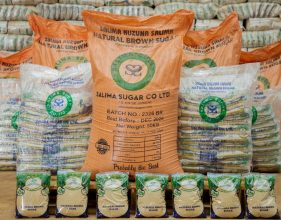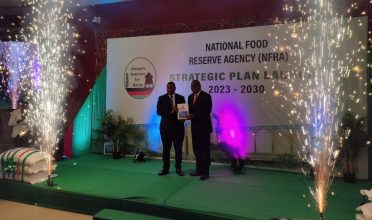Rising cost of fish feed chokes industry growth
Despite the availability of raw materials to produce fish feed, Malawi does not have commercial floating fish feed producers, a development industry experts say is stifling growth of the sector.
Ironically, in the 2021/22 National Budget Statement, Minister of Finance Felix Mlusu reiterated government’s commitment to developing the aquaculture sector to enable the local fish breeders improve local production and become competitive.

In line with this strategy, the minister said fish feed has been zero-rated and machinery specifically for producing fish feed will be exempted from value added tax (VAT), a move that was meant to boost the fish industry.
But Innovative Fish Farmers Network Trust resource mobilisation officer Dennis Chinkhata said in an interview that while the best type of fish feed is extruded fish feed, also known as floating fish feed, there are no local manufacturers of this type of fish feed in the country, forcing farmers to import the same from Zambia.
He said when transportation and other costs are factored in, the feed is expensive for the local fish farmer.
Said Chinkhata: “High-quality fish feed contributes to good fish growth, fish health and overall quality of the fish.
“When farmers combine quality fish feed and good management practices, they produce more quality fish which also increases their income.”
According to the Commercial Agriculture for Smallholders and Agribusiness (Casa) Aquaculture Sector Strategy, Malawi does not have commercial producers of floating fish feed despite its high protein-conversion ratio making it the appropriate feed type for aquaculture-based production, whether this uses ponds or cages.
Sinking feed, on the other hand, has low uptake because most of the feed ends up accumulating at the base of the pond or wasted in the water reservoir in the case of cage-based production.
In its April 2020 Country Strategy Paper, Casa said National Aquaculture Centre had installed a feed mill that can produce floating fish feed, but the capacity is too small to support any commercial production needs of smallholder farmers.
Maldeco Fisheries Limited, a subsidiary of Malawi Stock Exchange-listed Press Corporation plc, had invested in a feed mill, but stopped using it because it was only producing sinking fish feed, which is deemed to have performance deficiencies compared with floating fish feed imported from Zambia.
Meanwhile, Maldeco is only using imported feed from Zambia.
Other potential producers of floating feed include Chonona Fish Farms and Lenziemill Milling Company.
With the capacity of about 100 kilogrammes (kg) per hour compared with a monthly internal feed demand of about 250 kg, Chonona’s feed mill could potentially service other smallholder fish farmers.
Lenziemill, a local firm currently involved in production of poultry feed and aggregating agri-produce for export, is also planning to procure a floating feed mill.
One of the Lilongwe-based commercial fish farmers, Chris Tukula, said in an interview that that while there is feed specifically meant for juvenile fish and some for nutrient combinations targeting the growth and rearing phases of the fish, the most crucial aspect of this feed production is that it has float when thrown into water to enable fish to access it easily.
He, however, said there is a shortage of local producers of fish feed on the Malawian market. While the imported feed is available, it is not affordable.
Said Tukula: “This is a lost opportunity as most of the materials used in feed production are locally available and we should not be reliant on imported feed.
“We can save a lot of foreign exchange by increasing local production and reducing our reliance on imported feed.”
This, he said, is in addition to lack of extension services and quality fingerlings, which negatively affects the sectoral growth.
On average, fish feed costs K1 000 per kg and one needs a minimum of six months before harvesting fish and for optimal growth. The fish has to be fed three or four times.
To make fish feed in the local context, farmers use soya bean flour, maize or maize bran flour, salt, cooking oil, baking/wheat flour and additive raisins.
Fisheries Department director Friday Njaya observed in an interview that the cost of production is high due to high rates of crude protein (CP) in fish feed, which is usually above 30 percent CP.
“The ingredients are similar as the one used in chicken feed, but the only difference is that crude protein chicken feed is 17 percent crude protein while fish is 30 percent crude protein,” he said.
Casa figures show that Malawi’s aquaculture production contributed about five percent of the regional total in 2016 and ranked sixth after Zambia, Madagascar, Tanzania, Zimbabwe and South Africa.
However, the sector has shown signs of growth over the past couple of years.
Total annual production volumes reached an all-time high of 164 940 tonnes in 2016, up from about 81 400 tonnes in 2005 and 100 900 tonnes in 2010, according to the Department of Fisheries.
While the bulk of fish caught, sold and consumed has traditionally been produced by capture fishery, capture fishery production has declined in some years.
This has been particularly the case for the commercially oriented, high-value species such as the Oreochromis karongae locally known as chambo, the average annual production of which declined from more than 10 000 tonnes between 1980 and 1990 to around 4 000 tonnes between 2000 and 2015.
On the other hand, annual fish output under aquaculture increased from about 800 tonnes in 2005 to about 4 900 tonnes in 2015 and 7 672 tonnes in 2016.
The number of Malawians engaged in fisheries and aquaculture has also increased.
The sector employed 173 328 Malawians in 2016, including 7 139 that engaged in aquaculture. By 2018, the number of aquaculture fish farmers grew to about 15 465, according to a census carried out by the Department of Fisheries.
Most of these are smallholder fishers organised in farmer clubs with only two players operating at a commercial level.
In its strategy paper, Casa observed that imported feed from Zambia is expensive because Malawi Government levies a 16.5 percent VAT on its landed value.
But with the zero-rating of the fish feed in this year’s financial year, prospects are high the fish industry will boom.
The country’s tax policy has over the years not been supporting the growth of the fish industry.





